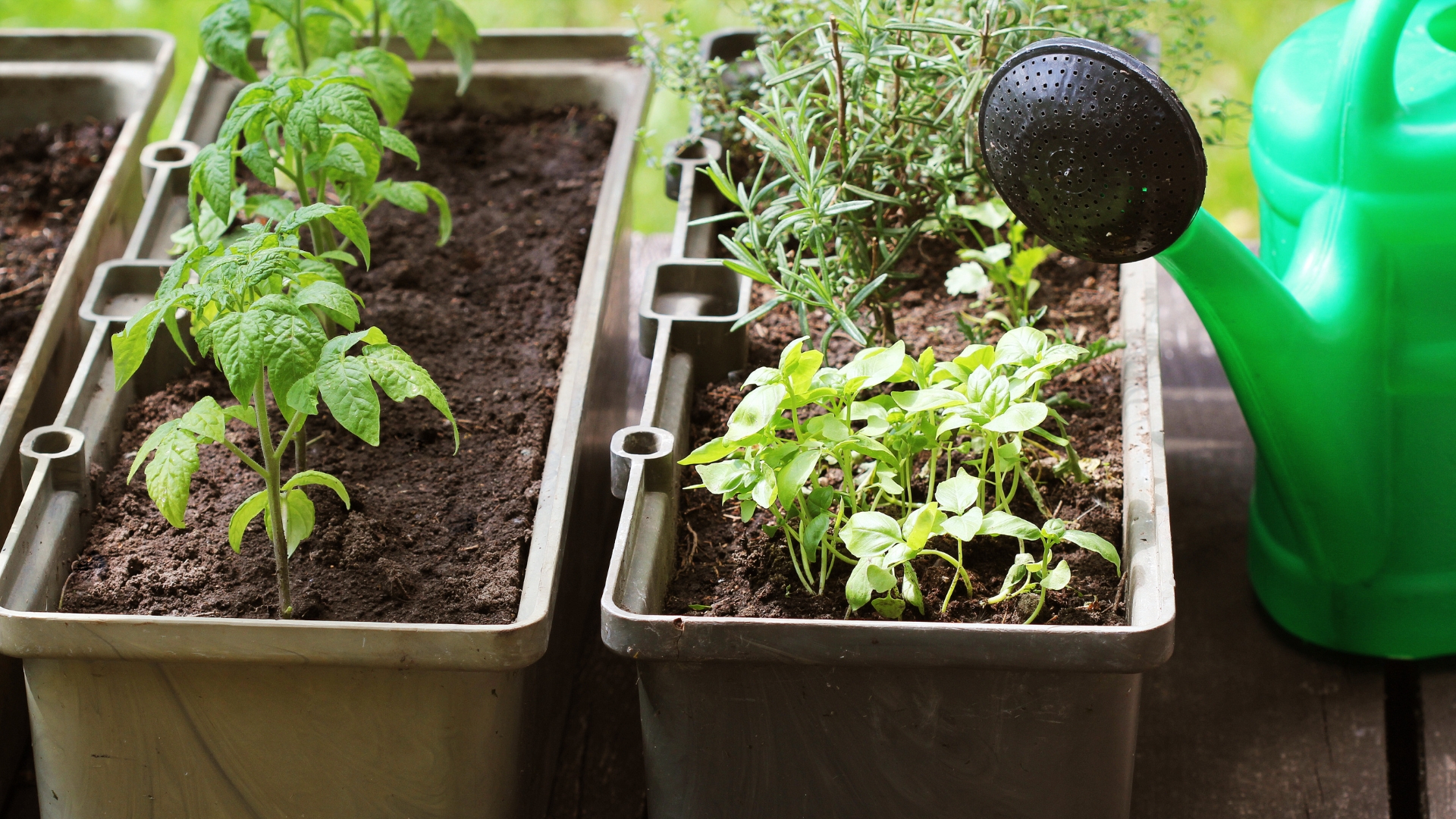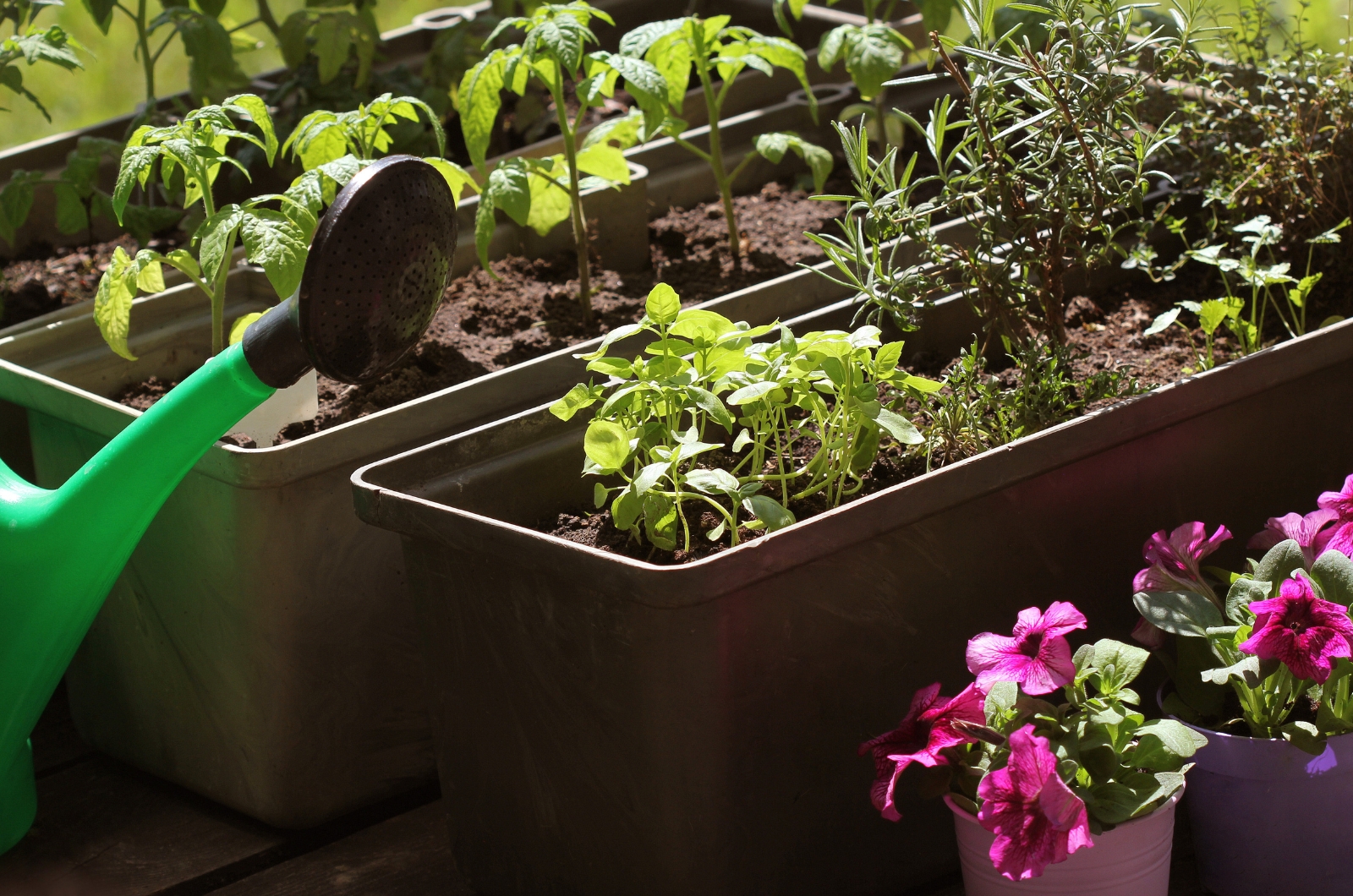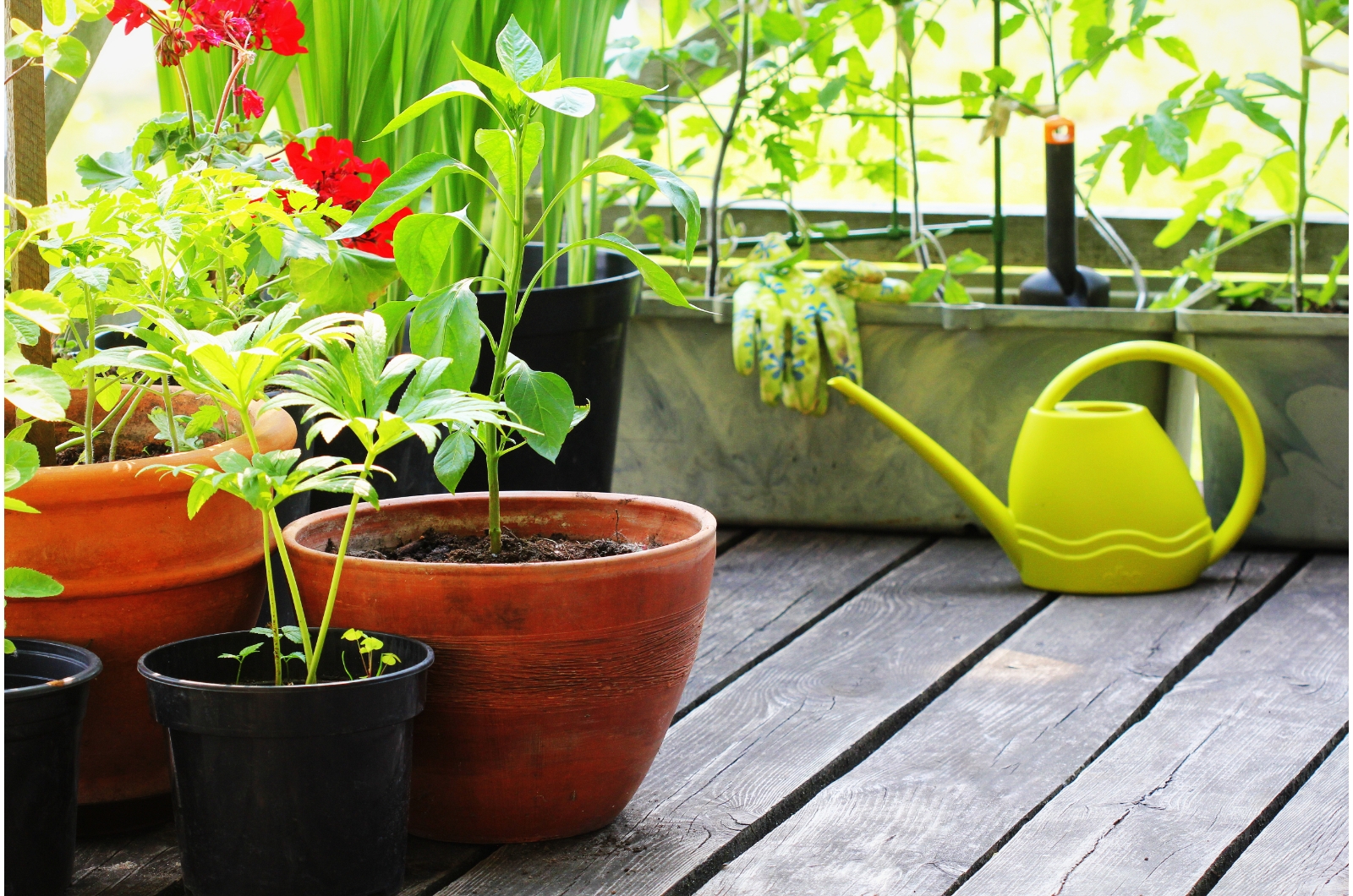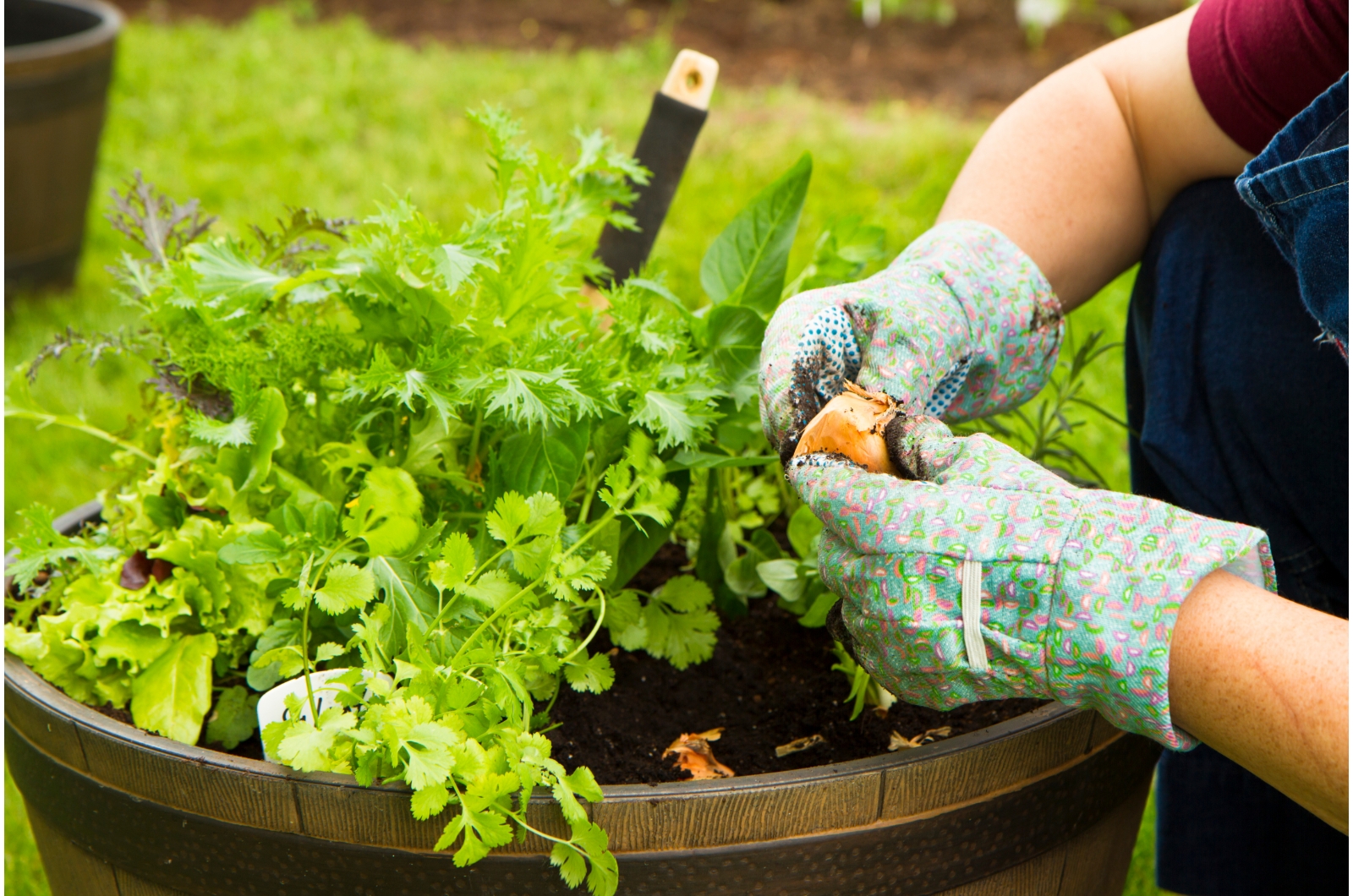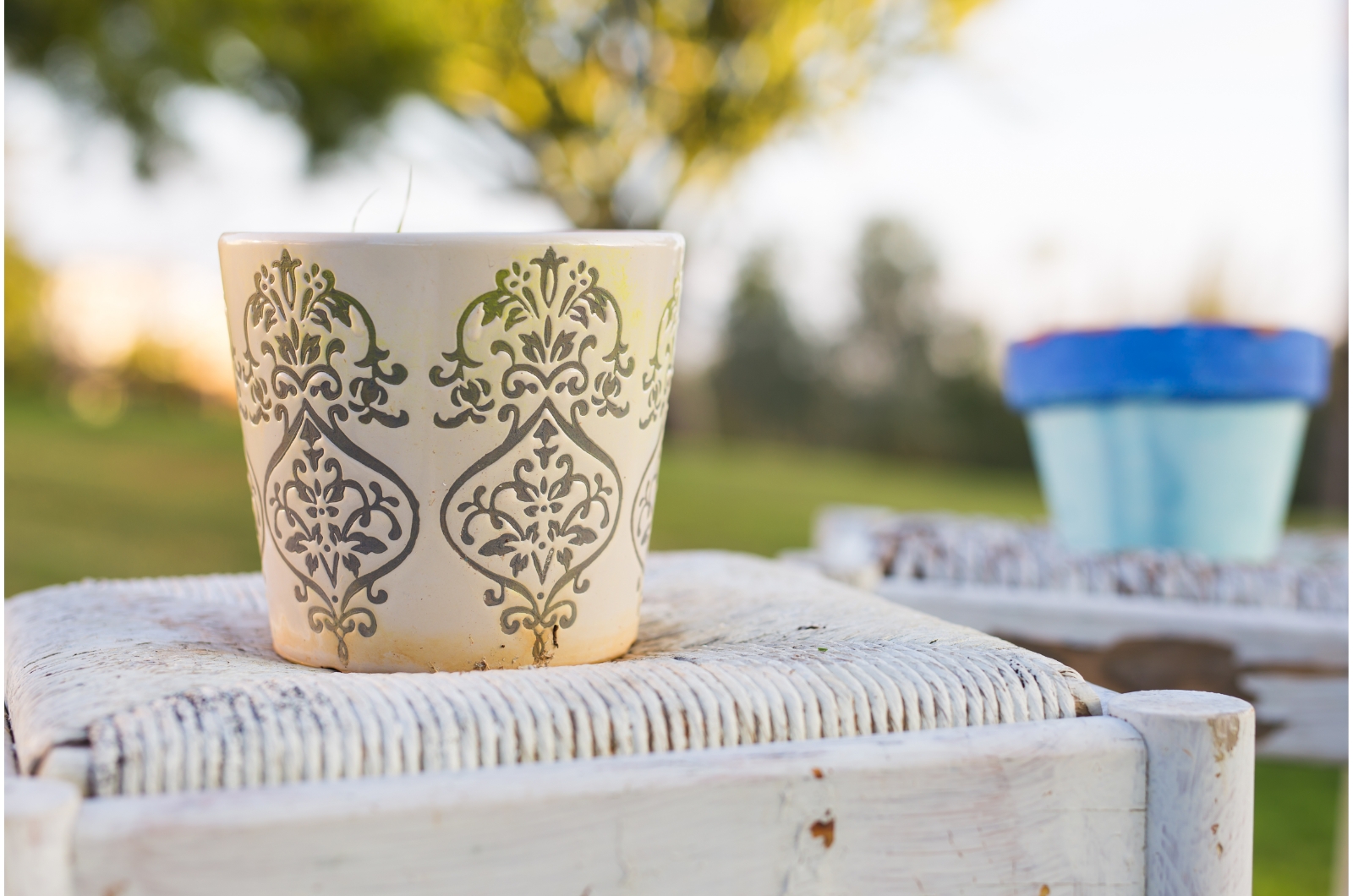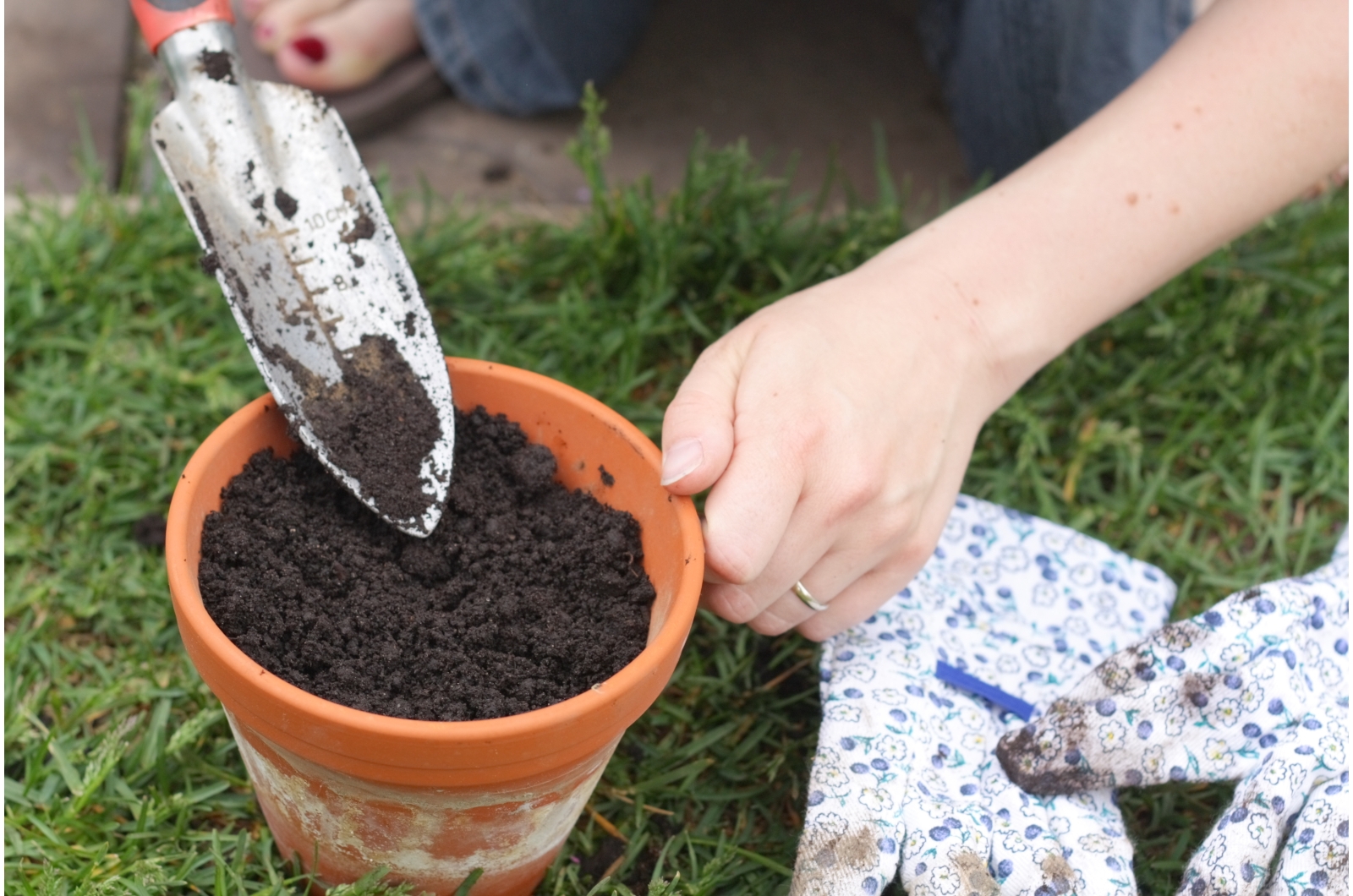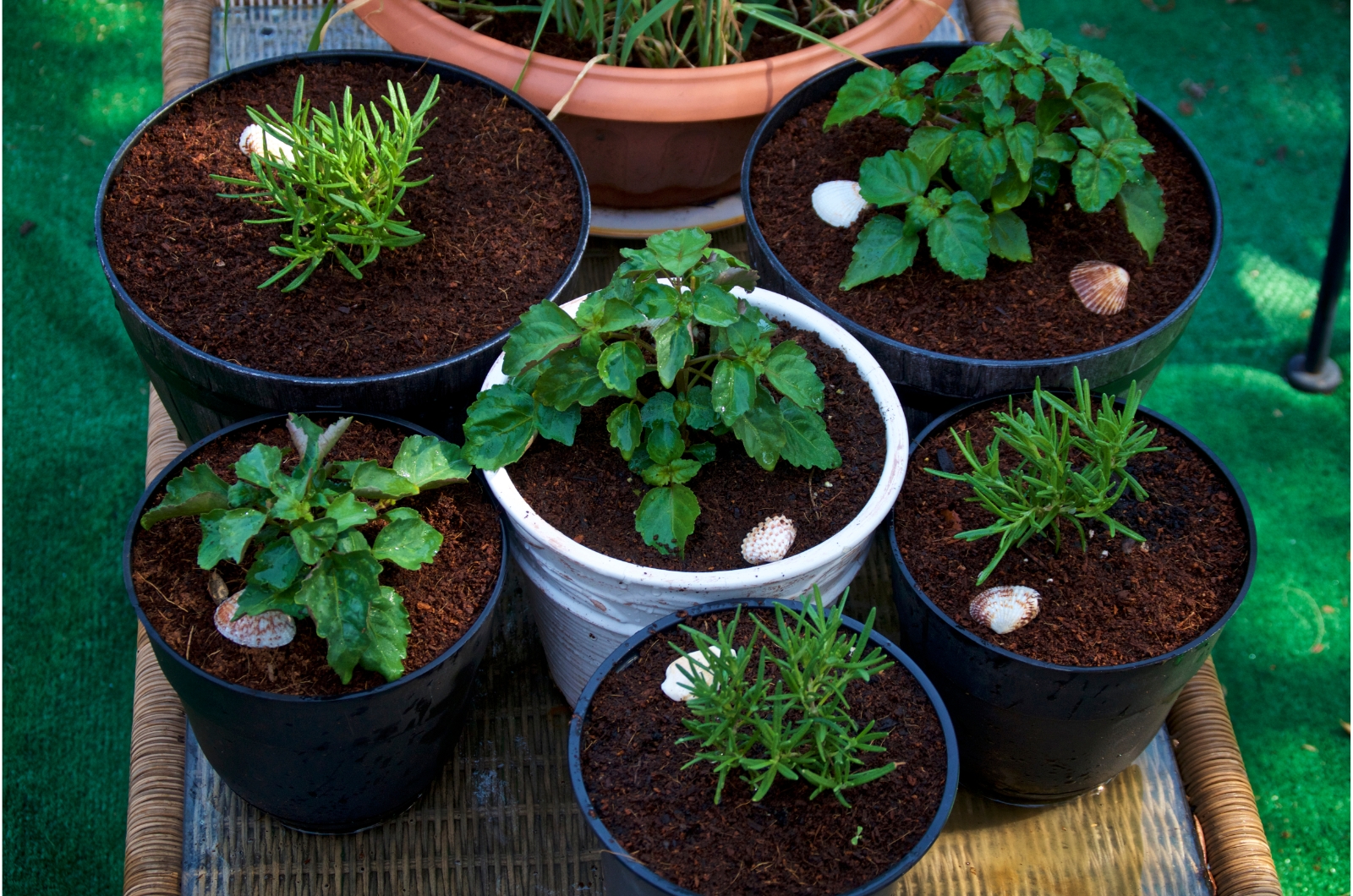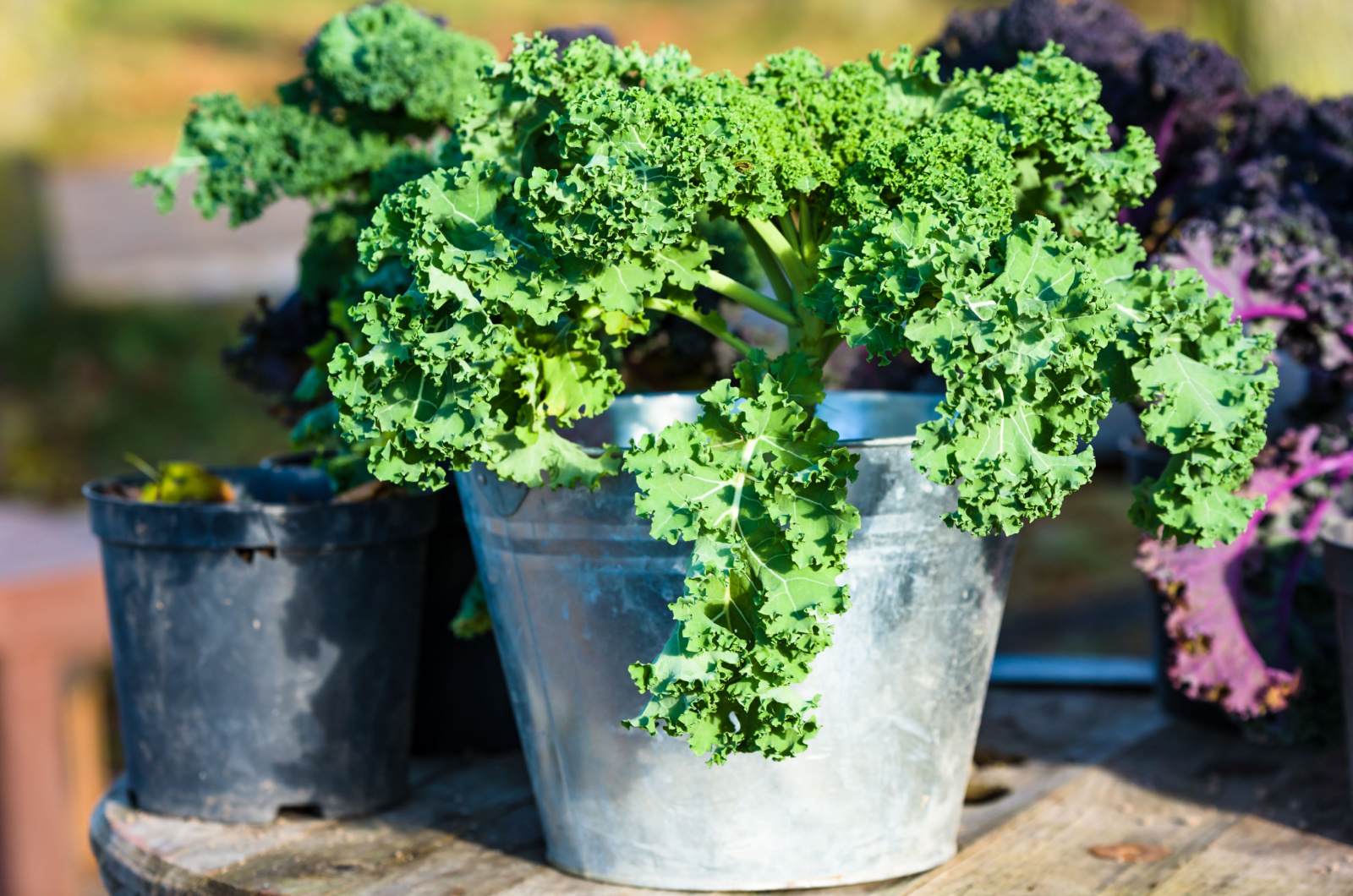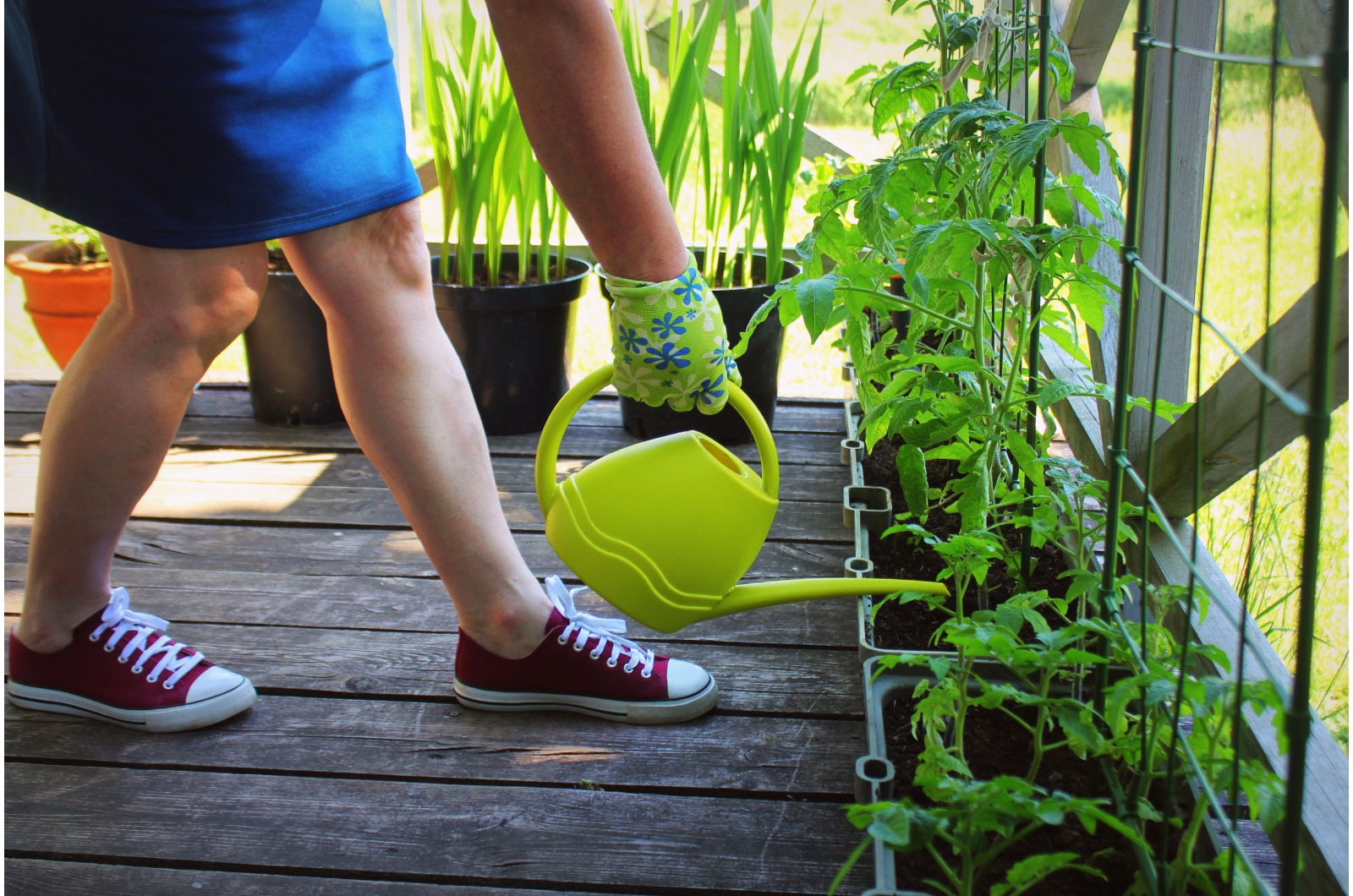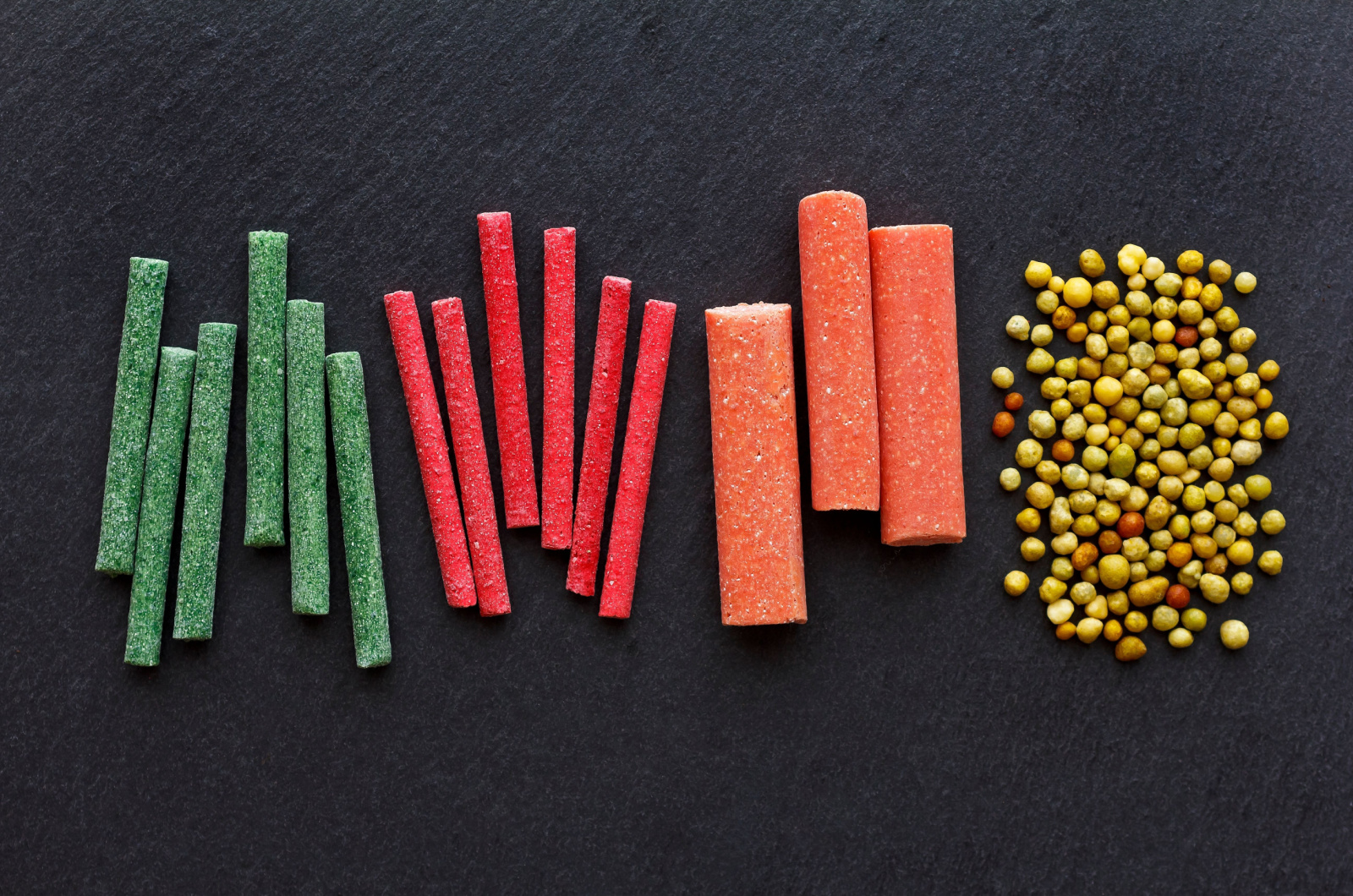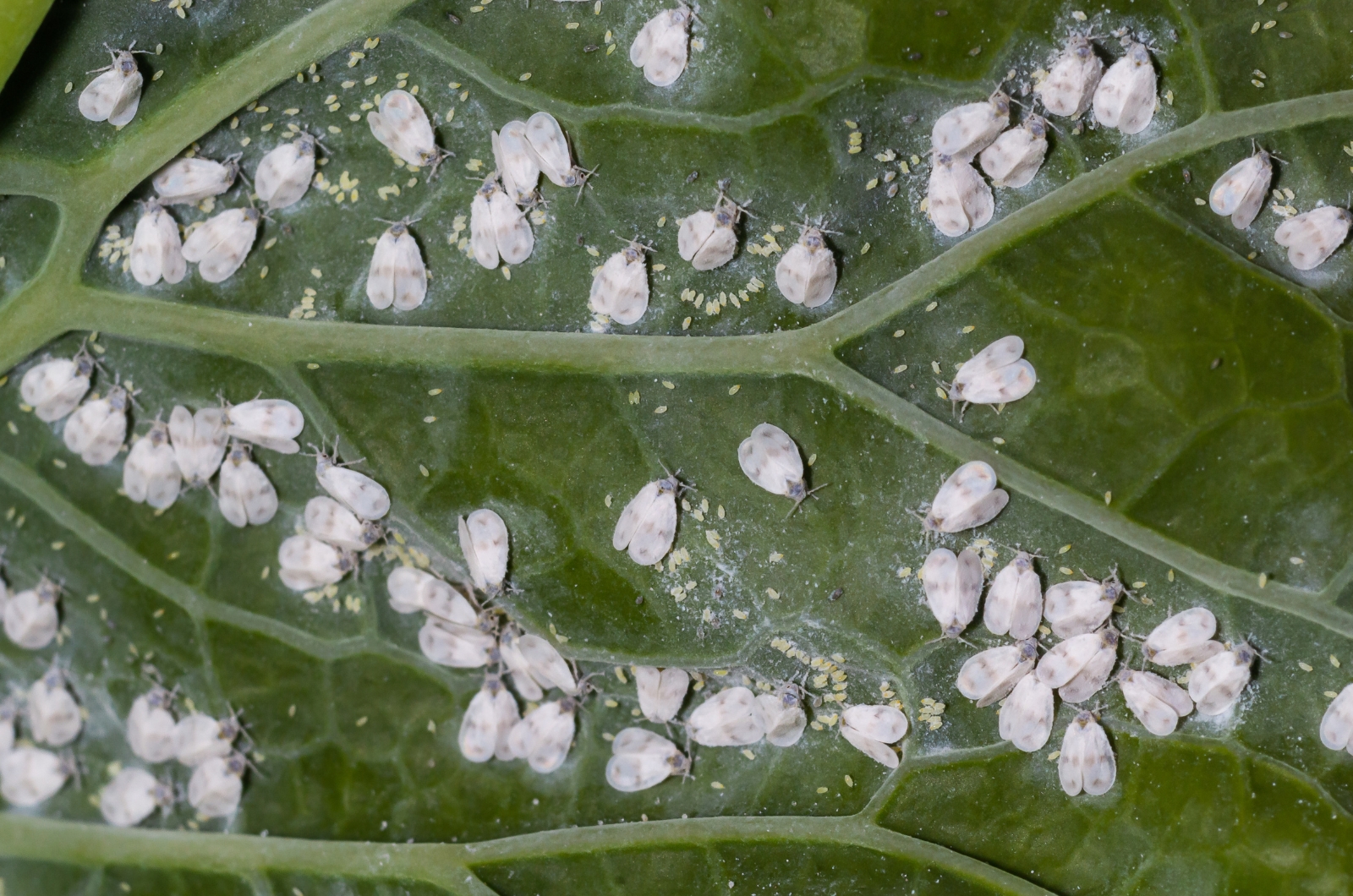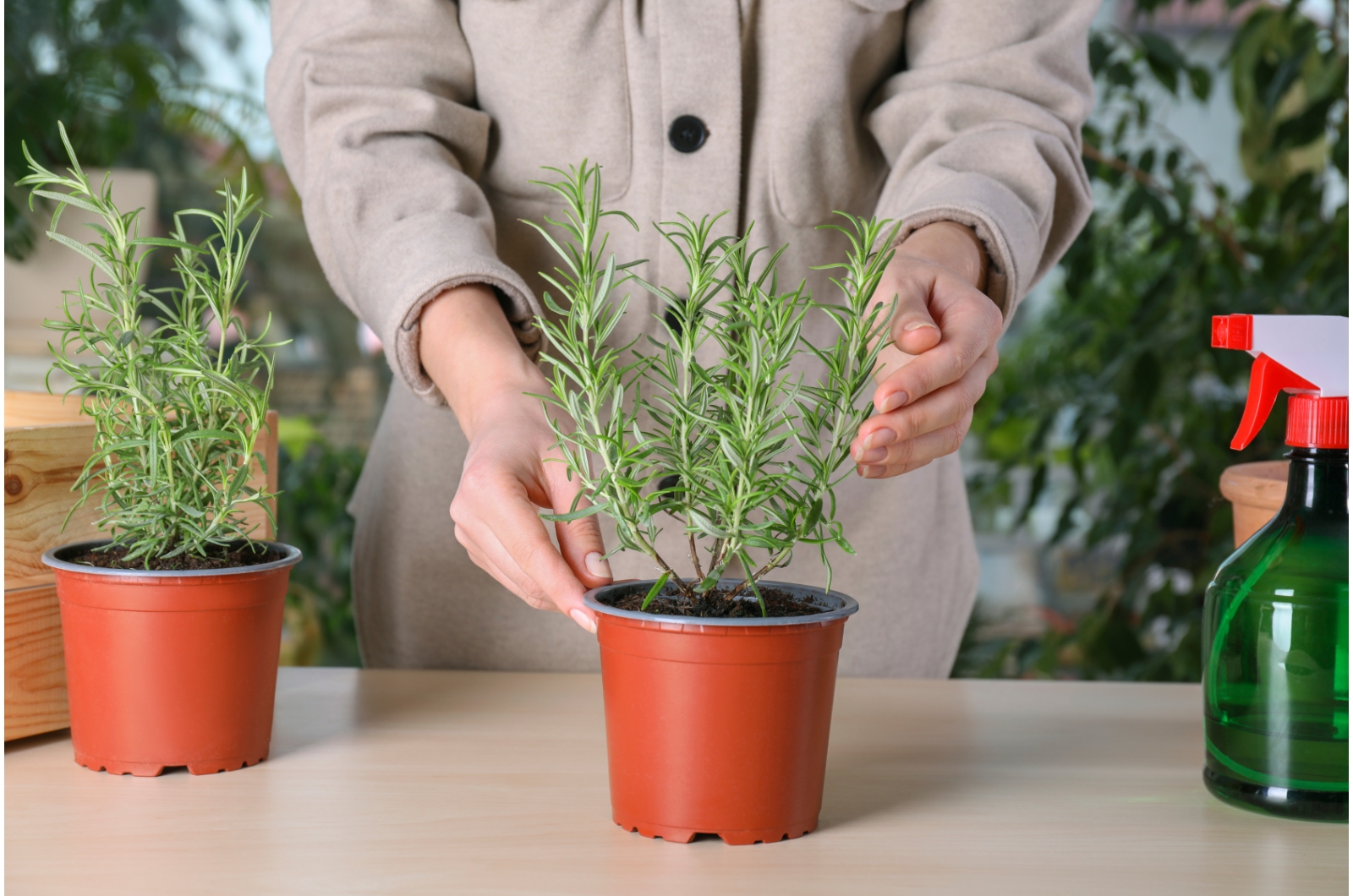Starting a garden isn’t easy, but you can make it simpler with a few adaptations. Using containers instead of a traditional in-ground plot is one way to do it.
Potted vegetables ensure you get plenty of produce with as little fuss as possible. You won’t have to weed them, you can move them around and adjust their light, humidity, and temperature needs, etc.
This type of gardening saves you space and allows you to grow your own food even if you live in an urban area.
Let’s get started!
What Is Container Gardening?
Container gardening is one of the methods that will help you build strong garden foundations that will last you for years to come.
It is a way of growing herbs, vegetables, fruits, and flowers in planters above ground instead of in it.
This type of gardening is an excellent way to design your space, not just use it!
4 Benefits Of Container Gardens
One of the main advantages of container gardening is that it can utilize even the smallest spaces, allowing you to introduce some greenery or grow your own food.
It is perfect for those who live in urban areas (apartments, condos) and for those who don’t have a garden soil suitable for plant growing.
Aside from utilizing space, potted plants and vegetables can improve the visual appearance of your porch, balcony, patio, etc. Raised beds are one type of container gardening, and you can do a lot for your space with them.
Also, containers make plant care a lot easier. You don’t depend on outdoor conditions and can manipulate temperature, lighting, and moisture to suit your veggies to a T.
Finally, pots allow you to grow your plants indoors and outdoors. This means you can have some fresh food even in the midst of winter!
8 Tips To Start A Container Garden
One of the things I love about container gardening is that you get to start small. That means you don’t have to spend much time or money in order to grow something.
All you need is a pot, some soil mix, and your favorite herb or vegetable. Of course, there are some things you need to bear in mind, such as what kind of pot and which substrate are the best.
You can find all that and more in the following sections!
#1 Choose The Right Planter
You can upcycle old buckets, barrels, and tires and turn them into one-of-a-kind pots. But if we’re talking about the traditional ones, you get to choose between glazed and unglazed terracotta (or ceramic), plastic, concrete, and metal planters.
All these materials are suitable for plant growing, but if you want to set yourself for success, go with a high quality container.
My personal favorite is terracotta! It is porous and will allow the excess moisture to evaporate quickly. And if you get a high-quality one, it will stand up to all kinds of weather. The same goes for glazed ceramic pots.
Yet, there’s nothing wrong with plastic pots. In fact, they’re lightweight and easy to move around. They do retain a bit more moisture, but you can fix that with less frequent irrigation or by growing water-loving herbs and veggies.
The only issue I have with them is that they look like plastic in most cases. If you want to elevate your space, plastic is not the material to go with.
You can also opt for concrete planters. I love these for large plants and potted trees. Their size and the wind (or the combination of the two) will have a hard time tipping them over!
Pro tip: No matter what kind of material you go with, make sure your planter has drainage holes. Without these, your plants may get root rot and start dying!
#2 Find The Best Potting Medium
The next most important thing you need to do is find the best soil mix for your vegetables. Luckily, there are many high-quality potting mediums out there.
You can buy one suitable for vegetables and start your gardening journey; there’s no need to overcomplicate things in the beginning!
Once you get comfortable and confident enough, you can try making your own growing medium. The key thing is ensuring it is draining, aerated, and fertile enough to suit your plants.
When it comes to potting mixes, the only thing you should use is your plain garden soil or topsoil. These mediums are fine when moist, but when they dry out, they compact, become hard, and even start repelling moisture.
It’s always better to get a large bag of potting mix than experiment, especially in the beginning. Stick with the tried and true Espoma or Miracle-Gro. While they may not guarantee your success, they will give you a fighting chance.
#3 Go With Proper Plants
While there may not be an exact formula for choosing proper plants, there are some tips I can give you to make this a lot easier.
First of all, choose between ornamental and food plants. You can grow both, of course, but not in the same container.
Then, find some that don’t need too much to thrive. Drought-tolerant herbs such as rosemary and sage, or even water-loving basil, are a great start.
There are many vegetables perfect for containers. Kale, lettuce, garlic, and peppers are amazing for beginners because they don’t need too much space. Small tomatoes and cucumbers can also grow in planters, but you may have to stake them.
If you want to go with ornamentals, try the thriller, filler, spiller method. The thriller is your focal point, so it has to be tall and look gorgeous. Canna lilies and irises are great examples.
The filler is a spreading plant that can fill all the empty spaces between a thriller and the soil surface. Petunias and pansies are my favorite.
Finally, the spiller is a trailing variety that will flow over the edges of the planter. Trailing begonias and trailing rosemary have that ability and look amazing in any setting.
P.S. You can switch popular thrillers, fillers, and spillers to spice up your containers even more!
#4 Annuals vs Perennials
Both annuals and perennials will give your container garden a huge impact, whether you grow plants for food or their appearance.
In fact, many vegetables we grow as annuals are in fact biennials or perennials. You can overwinter your pepper plants in pots and get a head start on your next season.
Herbs such as oregano, thyme, lovage, rosemary, sage, mint, etc. are all perennials you can grow in your planters.
If you want to add more color to your container garden, I’d suggest planting annual flowers first. They are inexpensive, fast-growing, and don’t need that much to thrive.
One word of caution, though; both perennials and annuals have their place in our containers, but you shouldn’t mix them together.
Once annuals start dying, you’ll have to remove them from the pot. This will disturb the roots of your perennials and it’s not worth it!
#5 Watering Container Gardens
The rule of thumb is to keep your containers damp; not soggy, not dry. All your vegetables (and many ornamentals) will flourish in these conditions.
That means watering your planters only when the top part of the medium is dry. You can check for this by using a moisture meter or inserting your finger 1-2 inches into it. I prefer the first method just because it’s cleaner.
The best watering technique is to irrigate your containers in the morning. This will give the excess moisture enough time to evaporate before the night arrives.
Also, make sure to only water the base of the plant, never its foliage. Why? Because constant overhead watering can increase the risk of fungal infections by keeping your plants wet for too long.
Finally, moisten the entire soil, not just the top. You can achieve this with slow and long irrigation. You can stop once you notice that the excess moisture has started to drain through the holes in the bottom of the pot.
#6 Fertilizing Needs
All plants need nutrients to flourish. And while you don’t have to fertilize your potted plants and veggies, it sure helps to keep them healthy, looking gorgeous, and give you a bountiful yield.
I prefer pellets and granules because they release nutrients over time, lasting for up to 3-6 months. That way, you can get away with only 1-2 applications per year.
You can opt for organic or synthetic plant food. The former feeds the soil and the microbes in it, which nourishes your vegetables in return. The latter only introduces the nutrients to your plants.
Both of these methods work; it’s up to you to decide which one you prefer.
#7 General Maintenance
Container garden isn’t a one-time thing. It needs maintenance all year long. But don’t let this frighten you! This can be a great pastime and a thing to enjoy.
Watering your summer vegetables every morning will give you a reason to get up early. Moving them around until you find the perfect spot, taking them in for the winter, watching your plants grow from seed to fruit – it all pays off!
Another part of regular maintenance includes pruning and deadheading. The first method will lead to bushier growth, and the latter will give you more flowers. If you have ornamentals, you only need to deadhead (remove) spent blossoms.
If you have vegetables such as peppers, remove the first flowers to encourage your plant to produce more and give you a larger yield.
Finally, keep an eye on pests. The good news is that there are very few pests that will attack your container gardens if you keep them outside. The benefits of ladybugs and other predators include feeding on pests and keeping your plants healthy.
#8 Overwintering Container Plants
I love container gardens for one reason – you can grow plants outside your USDA zone without terminating your plants as winter approaches or treating them as annuals.
You can take them indoors and keep them comfortable until spring. When overwintering container plants indoors, make sure to check them for pests before taking them inside and prune them!

